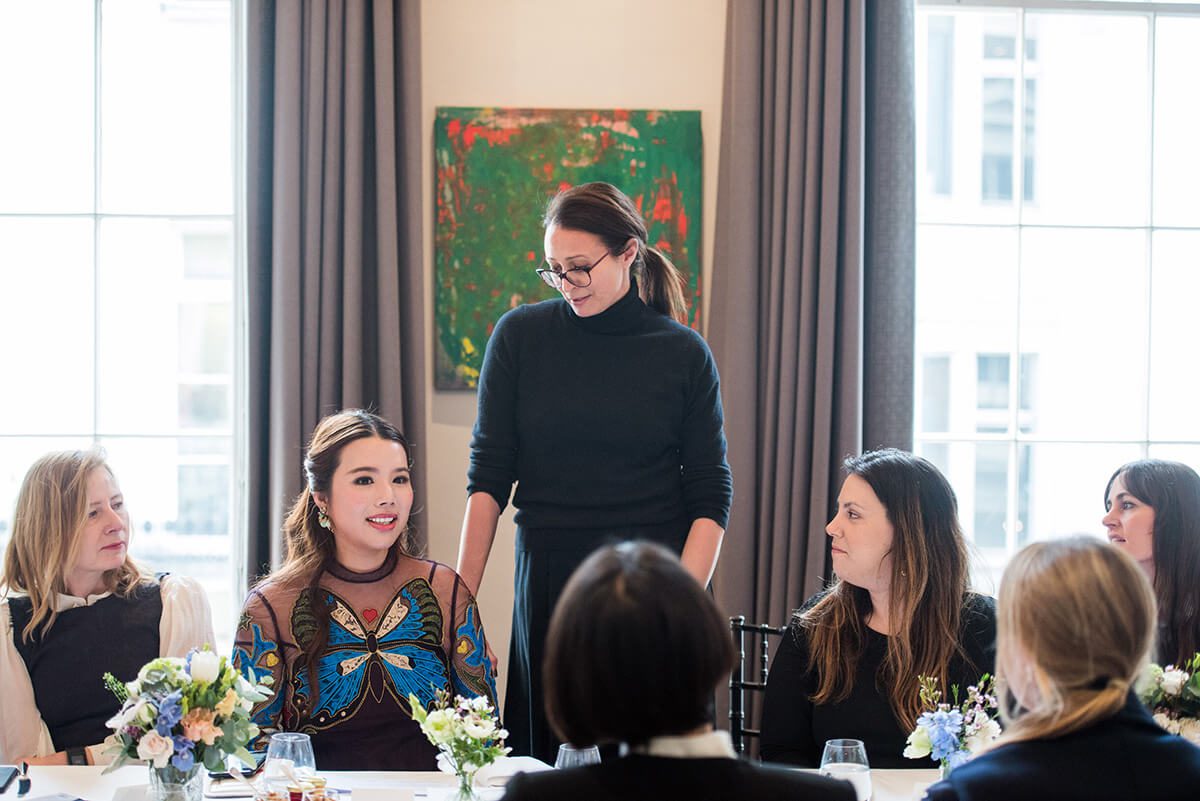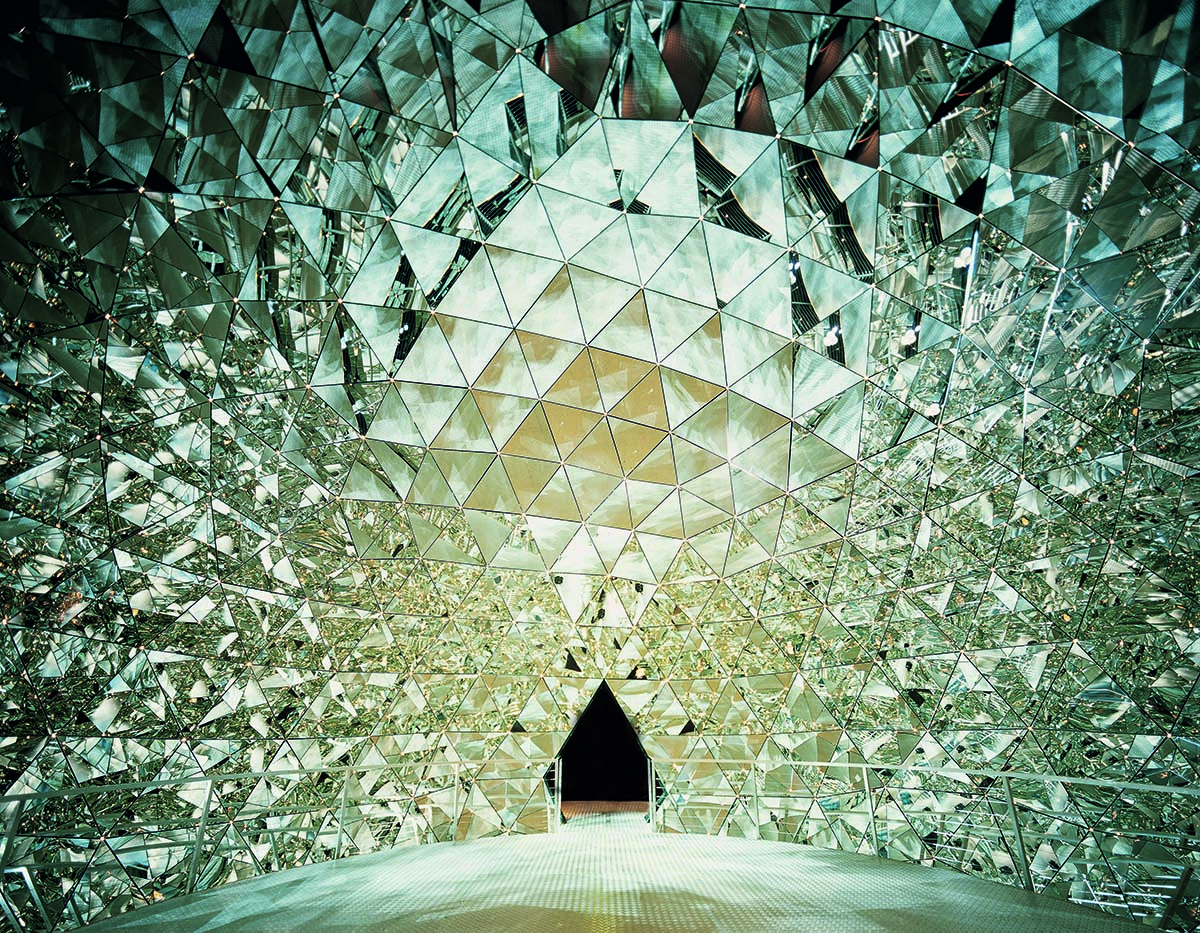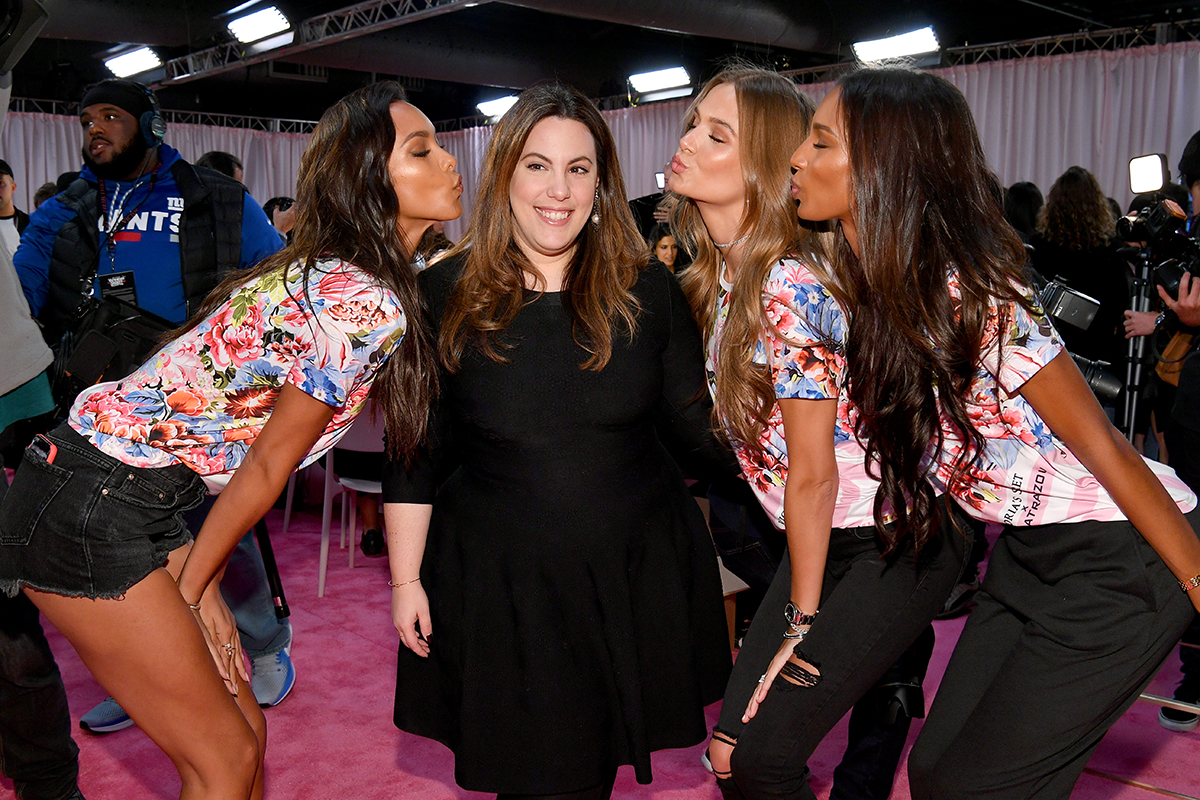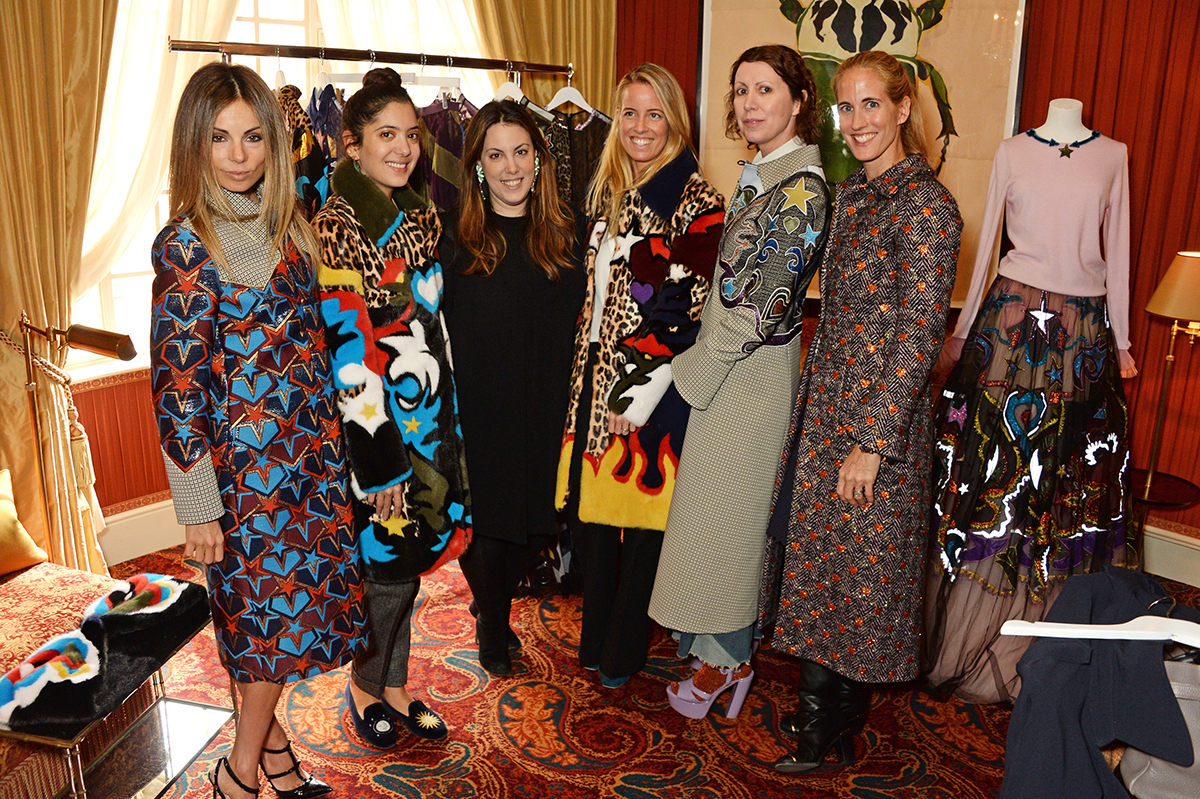
Wendy Yu. Portrait by Jonathan Glynn-Smith
Wendy Yu – entrepreneur, investor, cultural ambassador, fashion devotee, and frequent flyer between Shanghai, Hong Kong, London and New York – is taking the word ‘global’ to a whole new level, as Elisa Anniss discovers when they meet
Instagram can be hugely revealing about the people who use it, though rarely will you get the fullest picture of any of them. With her 1,913 posts and the 94.1K followers of her Instagram account, @Wendyyu_official, it still paints only a partial picture of this remarkable young woman, who is the founder and CEO of Yu Capital, a major Chinese investor in fashion and technology, an entrepreneur and a philanthropist.
Nevertheless, snaps of Wendy Yu with Giambattista Valli, Thom Browne and Charlotte Olympia do reveal her stellar fashion credentials. There are the images of the Met Ball in New York and of a dinner for her friend Mary Katrantzou, co-hosted with Lord Rothschild at Waddesdon Manor. Instagram also tells us that she appears to be something of a collector of evening gowns. Indeed, the rare snap of her in trousers raises an obvious question. “I love both, to be honest,” she darts back, when challenged. “I’m very spontaneous. Sometimes I love things that are dreamy, crazy and imaginative. At other times I just like very simple things. I love to be a chameleon, it really depends on my mood.”
Follow LUX on Instagram: the.official.lux.magazine
This morning she’s flown in from Hong Kong. For the flight, she wore head-to-toe Alaïa with a yellow Mary Katrantzou fur. It’s typical of what she wears on planes – Alaïa or a kaftan from Oscar de la Renta paired with flat shoes. “All super comfy so I can sleep easily.” Last month she flew every two or three days. Shanghai is her main base, but Hong Kong, London and New York, are all places where Yu regularly spends time. “New York more now because next year we’re launching an exciting project there,” she ventures, but that’s all she’ll give on the details. Still, Shanghai is where she has a home and where her parents’ live – Yu is heir to her family’s business, the Mengtian Group, China’s leading wooden door manufacturer.
It takes sitting down and talking to this young entrepreneur and philanthropist to see that dressing up and accumulating possessions isn’t really what drives her. Her enquiring mind and the way she lights up, crackling with enthusiasm and talking nineteen to the dozen when discussing her many passions, leaves a lasting impression. It’s certainly something that Instagram is unable to convey. Fashion, disruptive technology, the arts, China and being a Sino- Western bridge connecting people, are just some of the subjects she tackles with energy.
“Wendy is passionate about London designers and entrepreneurs and has definitely made a positive impact by supporting some of the best talent out there. We need more people like her,” enthuses José Neves, the fashion-tech businessman who founded Farfetch, and husband of Daniela Cecilio Neves, in whose business Yu was an angel investor. Undoubtedly, it was Yu’s inquisitiveness that brought her to England in the first place. This involved spending time at school in Somerset, in the English countryside where she got a taste of the British boarding school system as well as meeting other, mostly non-Chinese pupils. Next, she went on to complete a degree in fashion management at the London College of Fashion with a stint in between interning at Vogue China. She has also completed executive business programmes at the universities of Cambridge and Oxford, interned for a family office in the Middle East and has spent time working for Mengtian. “Truth be told, while education is important, it’s not until you do internships and start working that you really learn about business,” she says.

Wendy Yu and Caroline Rush, Chief Executive of the British Fashion Council, co-hosted breakfast for Vogue China’s Editor-in-Chief Angelica Cheung
Today, Yu is the youngest member of the Fashion Trust, a British Fashion Council charity, and a founding member of the Victoria and Albert Museum’s Young Patrons’ Circle. Even though she herself doesn’t use the word ‘anglophile’, with her love of Harrods – “I still vividly remember the first time I went [there]. It really ignited my passion for fashion” – and her appreciation of British life beyond London – “I love the town of Taunton, and Devon is beautiful, too”– it’s a moniker that fits.
Read more: Geoffrey Kent on finding new places in a well-travelled world
In 2015, Yu founded the investment vehicle Yu Capital and in January 2018, Yu Capital became Yu Holdings. Yu Holdings is a platform created to unite the worlds of strategic investment, technology, philanthropy, arts and culture and to reinforce business and cultural ties between China and the rest of the world.
“The evolution of Yu Capital into Yu Holdings was a strategic decision to consolidate my investment activities with my cultural and fashion projects, all with the end goal of bridging the economic and cultural gap between China and the rest of the world, a mission that drives every decision Yu Holdings makes,” says Yu. The investment vehicle is divided into three main areas of interest: Yu Capital, Yu Fashion and Yu Culture. Yu Capital, the investment arm of Yu Holdings, is focused on strategic investment in global technology, lifestyle and fashion businesses that show high potential for growth in a global market.
Yu’s two technology investments are Didi Chuxing (for more information see end of article), the largest taxi-hailing firm in China, valued at US$35 billion and whose other investors include Apple, Alibaba and Tencent, and Tujia.com. This Chinese online marketplace and hospitality service enables people to lease or rent short-term lodging, something like Airbnb (see end of article).
“Because Didi and Tujia are both multi-billion-dollar companies, they have very big and powerful investors. I’m involved financially rather than strategically,” she notes. “I’m generally less involved with technology investments than with my fashion and lifestyle investments, where I look to add value and contribute to their development and growth.”

One of Yu Capital’s recent ventures, Mary Katrantzou, with her SS18 show
Earlier in 2017, Yu Capital made its first luxury fashion investment in the London-based designer brand Mary Katrantzou (see end of article) whose sought-after collections are sold in leading luxury stores around the globe. Yu confesses that before she makes the final decision on an investment she consults with her fortune master, who told her great things about Mary, prompting her to go ahead. “At the back of my mind there is always the question, is this relevant to the Chinese market?”
Read more: President of Monaco Boat Service Lia Riva on the family business
Whether she proceeds with a fashion investment or not also depends on the chemistry she has with a designer as well as the company’s future potential. “With Mary, I really like her as a person as well as a business woman. Her enthusiasm is infectious and she’s hugely talented.” She was also struck by Katrantzou’s background in architecture and opportunities that lay waiting in the whole lifestyle sector.
Yu believes that past collaborations with Adidas, Moncler and Topshop have already helped Mary Katrantzou capture the attention of Chinese consumers and that there is still greater opportunity there for Katrantzou’s core brand. “We are very open to the new emerging designers and the purchasing power in China is now very strong. However, one needs to select carefully which partners in China will be the best in the long term because they all want exclusivity.” Yu can help Katrantzou navigate these complexities. “I don’t have any agenda, I only want what’s best for Mary,” she says.
The investment in Mary Katrantzou followed two made in 2015, one in ASAP54, recently re-branded Fashion Concierge, and another in the sustainable accessories brand Bottletop. Yu was drawn to Fashion Concierge by the disruptive technology it displayed at the time of its launch, whereas with Bottletop it was the idea of social investment that appealed to her. “I liked their concept and approach to sustainability,” she says. As a pioneering fashion accessories brand (founded in 2012 by Oliver Wayman and Cameron Saul, the son of Mulberry founder Roger Saul), the brand revolves around the simple idea of re-cycling the ring pulls from drinks cans – hence the name. A novel, sustainable, chainmail-like material, often with an enamel finish in a range of colours, helps to make Bottletop products, which include totes, clutches, backpacks and belts, instantly identifiable. The company also funds the Bottletop Foundation, which supports young people in Brazil, Ethiopia, Kenya, Malawi and South Africa. “Wendy is a rare visionary and we have loved having her as part of the Bottletop family,” says Saul. “Wendy is also very strategic and has supported us with important introductions as we position the brand to launch in Asia.”
This is echoed by Daniela Cecilio Neves of Fashion Concierge: “I’ve greatly benefited from Wendy’s insights as a tech-savvy, fashion-loving individual, who can also provide me with a perspective on China,” she says.

Wendy Yu at the Women’s Opportunity Center in Rwanda
Ever since Yu took a trip to Rwanda with Brita Fernandez Schmidt, the UK executive director of the charity Women for Women International, social investment, and how similar principles could be applied to the less developed parts of China, have been at the forefront of Yu’s mind. “Brita invited me to see her work in Rwanda because that’s where they have the Women’s Opportunity Center. I’m very curious and I’ve always wanted to see different parts of the world. It was the most inspiring trip I’ve ever been on. I’m looking to potentially develop some culture-related projects with Women for Women, as Brita is keen to see rural parts of China. As a Chinese woman, I would like to explore how we could create support areas in China where there are still huge gender inequalities.”
This leads into the overarching ambition of Yu Culture, the purpose of which is to enrich China’s cultural landscape through development and exchange initiatives in film, art and media, and by working in special partnership with international cultural institutions on projects to be unveiled in 2018.
Yu is already closely involved in the Victoria and Albert Museum. “The V&A has been one of my favourite museums since my student days,” she enthuses. “They invited me to join and I said yes without hesitation.” Her role includes introducing friends from Asia as well as a young group of people from the international fashion and art world. “It’s a bridge, again,” she continues. “Introducing people comes very naturally to me. It’s win-win for everybody because they love the V&A and getting to know the industry community, and the museum loves to meet new art collectors.”
Her involvement is certainly appreciated by the museum. “As a Founding Member of the Young Patrons’ Circle, Wendy Yu has been an enthusiastic supporter of the Victoria and Albert Museum, not only contributing to the successful launch of this important initiative and its exciting programme, but also through her involvement with the Museum’s annual Summer Party and her passion and knowledge of the V&A’s fashion collection,” says a senior museum spokeswoman.
“I love to be the bridge between China and the rest of the world because I love both cultures and want to enhance the connection between the two,” continues Yu. The South China Morning Post recently described her as being both “a sounding board for British designers negotiating the labyrinthine ways of doing business in China” and China’s “unofficial ambassador for British fashion”.
Net-A-Porter, a company Yu admires because of its “great customer experience”, invited Yu to become one of its global ambassadors. In this new capacity, she is scheduled to take the former Prime Minister’s wife, Samantha Cameron, and her clothing brand Cefinn, which sells on Net-A-Porter, to China in 2018. It’s a collection she considers to be super wearable with a good price point. “I’ve been wearing her blouse with different outfits and wearing her skirts,” enthuses Yu. “I respect Samantha’s vision and I think Cefinn would be very relevant to Chinese professional ladies.”
According to Yu there are still major differences between the West and China, particularly in terms of technology. In China, she can go out carrying just a mobile phone. She explains that instead of a wallet, Chinese people use Alipay, a third-party mobile and online payment platform established in China in 2004 by the Alibaba group, or WeChat Pay, launched by Tencent.
Her insight into a world that the West is hungry to know more about, is just one of the reasons why she is so in demand in the fashion world. “Wendy’s business acumen and knowledge of the financial sector are invaluable assets to our British designers hence why her support and dedication to the BFC Fashion Trust are so invaluable,” says Caroline Rush CBE, chief executive of the British Fashion Council. Yu describes Rush as “a friend and a mentor” and is someone with whom she co-hosted a breakfast to welcome Angelica Cheung, the Vogue China editor-in-chief, to London. Yu’s involvement in the BFC Fashion Trust has also led to her meeting many designers and learning about the challenges that they face. “You find that a lot of designers are super-creative but they don’t really have that business sense. Nowadays, for a fashion brand to evolve, you have to have both creative vision and to understand the commercial world, exactly who the customers are and what they are looking for.”
Read more: Why we love Club Dauphin on Cap Ferrat right now
Huishan Zhang is a London-based designer in Yu’s friendship circle who is known for his classically feminine evening gowns and dresses that sell in his Mount Street flagship. Like Yu, Zhang was born in China, but left when he was still a teenager. “I’m great friends with Huishan Zhang,” Yu says. “He’s a lot of fun, we share a lot of friends and look to support each other as well, on both a personal and a business level.” According to Yu, he makes her made-to-measure dresses for her and she collects signed sketches of his designs. “Wendy has been a good friend to me,” says Zhang, who doesn’t manufacture in Italy but produces his clothes in his family’s factory in China. “She is an active entrepreneur and supporter of the fashion industry, honing in on new talent, along with great passion and a unique style.”

Portrait by Jonathan Glynn-Smith
It’s mid-afternoon and we’re coming to the end of our interview now and still there’s no sign of any jet lag or of her flagging post-photo shoot. Yu’s energy levels are high. But then they have to be, as she’s off to Lisbon next, speaking at Web Summit, which bills itself as “the largest tech conference in the world” and welcomes an extensive and diverse line up of speakers ranging from Al Gore to Suzy Menkes. Yu says she’s booked to talk on two panels, one with Caroline Rush and another with the CEO of Matchesfashion.com and Vestiairecollective.com. “It’s all come about very spontaneously and it’s a nice group of industry insiders.”
It won’t be Yu’s first foray into the speaker circuit. In June she appeared on the British Fashion Council’s Fashion Forum panel alongside a group including Yana Peel (CEO of the Serpentine Galleries) and the shoe designer Rupert Sanderson, discussing cultural and commercial partnerships in China. She has also given similar talks covering her investments and connecting with China, in Cambridge and at London Business School, as well as back in China. When asked if she ever gets nervous about speaking publicly she replies: “No, not really. Though I always prefer talking on a panel, it feels more natural. I wouldn’t say no to a glass of champagne if my nerves get the better of me!” And why not, I say.
LUX would like to thank 45 Park Lane in Mayfair, London, for the use of its exquisite Curzon Suite for the shoot of Wendy Yu by Jonathan Glynn-Smith. 45 Park Lane is the artistic sibling to The Dorchester, next door, and has a fabulous program of art events, its own curator, and its own artist in residence. dorchestercollection.com
For more information on Wendy Yu’s investment platform visit: yu-holdings.com
Mary Katrantzou
Mary Katrantzou, who won the £200,000 BFC/Vogue Designer Fashion Fund prize in 2015, is Yu Capital’s most recent investment. One of the heavy hitters at London Fashion Week, the Greece-born designer delights the audience each season with highly original ideas brought to life using elaborate embroidery and embellishment, a mix of textiles, prints and silhouettes and an inimitable signature that shouts Mary. The London-based ready-to-wear marque was established in 2008, after the designer graduated with an MA in Fashion from Central Saint Martins. She was soon dubbed The Queen of Print by the press, a tag that recognised the enormous influence of her work in the medium. In recent years, collaborations, including capsule ranges with Longchamp, Moncler, and Adidas Originals, have helped to broaden her appeal at home and abroad, and of course in China. Mary Katrantzou doesn’t have a bricks-and-mortar store, yet, but she does sell to leading luxury stores in many countries including Harrods, Harvey Nichols, Bergdorf Goodman, Saks Fifth Avenue and Le Bon Marché. “Wendy is an extraordinary person with a pragmatic and forward-looking vision, who is a close friend as well as an ambassador for the brand,” says Mary Katrantzou. “The most important thing for me is to be surrounded by people who understand my vision and support me in building a truly international lifestyle brand. It’s very exciting to enter our 10th anniversary with a board of incredible women advisors who are shaping the industry in their own right and will be helping us shape our future and reach our full potential.”
Tujia
The rental company has taken couch surfing to a whole new level with $300 million of investments announced in October 2017. Giving Airbnb a serious run for its money, and valued at $1.5 billion, Tujia was founded in 2011 under Tujia Online Information and Technology Company of Limited Liability. With 345 locations across China to choose from and at least 1,000 partnerships internationally, it boasts 650,000 listings and is tapping into a large affluent travelling class, revolutionizing the hospitality industry in China.
Didi Chuxing
The taxi-hailing app is China’s answer to Uber (in fact, it acquired Uber China in 2016) and is the largest such company in the world, with 200 million rides under its belt last year. The app was launched in 2012 and today has over 450m users across the Chinese continent, spanning 400 cities and a variety of services. From social ride-sharing to options including Didi Chauffeur, Didi Bus and Didi Car Rental and Hitch, its social ride-sharing branch, it has taken China by storm and has recently developed an English-language version of the app. It is also looking towards the future with groundbreaking investment into AI technology, with over $5.5 billion raised in 2017.
This article originally appeared in the LUX LOVE Issue, Spring 2018





























Recent Comments